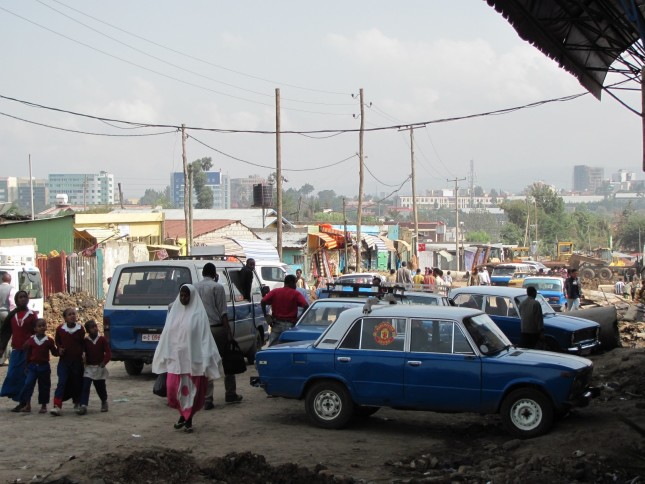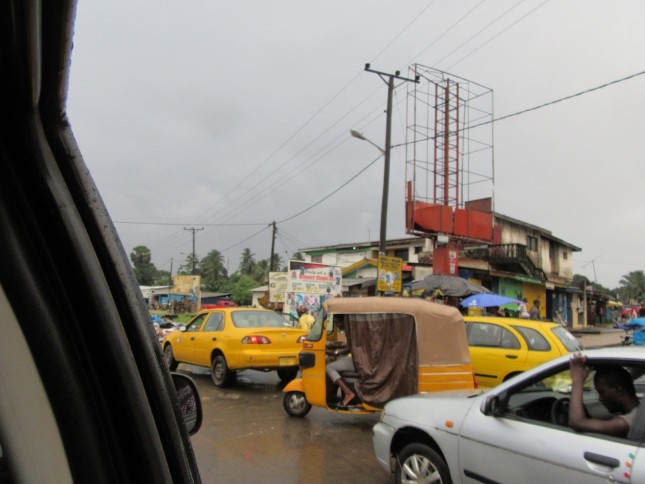-
In COVID’s Wake: How to Revive Urban Mass Transit

The COVID-19 pandemic could lead to the death of mass transit. Few victims of COVID-19 were infected aboard mass transit, according to recent research. Yet ridership on urban mass transport has fallen sharply during the pandemic. In some places, such as Wuhan, China, the government shut mass transport down. In other places, the public stayed away. For example, New York City’s Metro-North commuter line reported a 95 percent COVID-19-related decrease in riders. Bus systems, which often disproportionally serve poorer riders who cannot work from home, have seen marked but less extreme drops in ridership.
Public transport helps reduce traffic, improves safety and air quality, and increases travel options. In the Global North, urban public transport primarily takes the form of trains, busses, and dedicated taxis. In recent years, two new privately-owned forms have become important. Rideshare services have revolutionized transportation across the globe. And many cities have welcomed electric scooter and bicycle services. The reduction in vehicular traffic caused by COVID-19 has allowed some cities to greatly expand bike lanes and helped riders feel safer.
Mass Transit in the Global South
In the Global South, mass transit often looks different. Many countries rely heavily on entrepreneur-owned minibus and car taxis and less formal transit systems that keep cities like Nairobi and Addis Ababa running. In South Africa, for example, almost 70 percent of households use these mostly unlicensed taxis daily. And three-wheeled and even two-wheeled motorcycles provide more agile transportation that bypasses congestion. Although small, they often carry multiple passengers in close proximity.

Reviving Transport Systems
While the pandemic could spell the end or major reduction of public transit, it could also offer an opportunity to revitalize and enhance transport systems for the long term. Regardless of whether the transportation is ultramodern, such as flying cabs or more traditional, mass transit will be needed for cities to fully and equitably recover from the economic impact of COVID-19.
Before an economic revival can occur, two things must happen. First, riding in mass transit needs to be safe. Equally important, riders need to feel safe. And while a vaccine for COVID-19 may emerge in the months ahead, it will surely not be universally available for a while and, continued social distancing may be necessary. And unfortunately, accelerating habitat loss, leading to more numerous human-wildlife interactions, increases the chance of more pandemics in the near future.
Safety Protocols
Many countries have already turned to enhanced cleaning and new safety protocols to help riders feel secure. Operators are also launching public awareness campaigns, sharing studies that show public transportation is not a major vector for COVID-19 infection, for example. The Centers for Disease Control and Prevention in the United States and its European Union counterpart have provided detailed guidance on such safety measures. Vehicles will need regular and frequent cleaning that increase operating costs and take vehicles out of service during cleaning. For an owner in the developing world, any cuts in service will eat into already low profits. Higher-tech approaches, such as ultraviolet light filters, already deployed in some locations, may offer solutions for air travel and modern rail service. But they would be too expensive for lower-income countries and small operations.
Another low-tech and proven approach is a face mask requirement. Operators may need to invest in hand washing or sanitizing stations and signs encouraging mask use. Some countries require temperature checks before transports can be boarded, though the effectiveness of this beyond public morale is doubtful.
The need to social distance will continue to limit the number of riders, which poses an especially large challenge in the Global South where transports are notorious for their crowded conditions. European operators estimate that requiring a 2m (6 feet) spacing will only allow about 15 percent occupancy, for example, and South Africa is still limiting passengers per minibus taxi to 70 percent. Suggested solutions include diversifying work hours to stagger riders so that they do not all pack the streets at rush hour and increasing transport frequency to compensate for reduced capacity. And services need to ramp up, possibly even beyond pre- COVID-19 levels, before riders fully return, to convince riders that public transport is a workable option again. But these solutions all come with extra costs and potentially lower profits. Poorer operators will need help with these costs.
Downward Spiral
When urban public transport is reduced in scope or frequency, it will harm the economy, making it hard for workers to return to their jobs and tourists to visit attractions. A sustained decline in transit systems will likely lead to a downward spiral that hurts urban poor most, given their greater reliance on mass transit.
Improving Perceptions of Mass Transport
Improving perceptions of mass transport can aid in urban economic recovery. Especially in cities that have not become addicted to personal vehicles yet, increasing use of mass transport in the aftermath of COVID-19 is an opportunity to establish patterns that help a broad swath of the population for decades to come in cities. Many mass transit operators rely on antiquated cash payment systems that require close physical interaction. This is the perfect time to invest in helping small business owners go digital by providing training and loans for equipment that allows them to collect fares via phones or touchless, prepaid cards. Using digital payments can also help in contact tracing.
Reinvigorating the nascent expansion of electric bus use, an industry currently dominated by Chinese companies but hungering for Western investment, could be a high-tech way of both addressing urban transportation and future environmental needs. Because both capital and innovative technology are required, American foreign assistance can help lead the way on projects such as development of e-busses. Further, American support can counter influences from countries that might otherwise seize this chance to dominate the world’s urban economies for decades to come. If approached proactively, the pandemic can be a catalyst to increase and improve mass transit and make cities and their streets safer and more livable.
Disclaimer: The views and opinions expressed in this article are those of the authors and do not necessarily reflect the official policy or position of any agency of the U.S. government. Assumptions made within the analysis are not a reflection of the position of any U.S. government entity.
Gretchen De Silva is an American Association for the Advancement of Science Science & Technology Policy Fellow in the Office of Foreign Assistance, U.S. Department of State.
Chris Upchurch is a Senior Advisor in the Office of Foreign Assistance, U.S. Department of State.
Gad Perry is a Professor of conservation biology at the Department of Natural Resource Management at Texas Tech University and a Jefferson Science Fellow in the Office of Foreign Assistance, U.S. Department of State from 2019–2020.
Sources: BBC, Centers for Disease Control and Prevention, Charged Electric Vehicles Magazine, City Possible, CNBC, CTPost.com, Eno Center for Transportation, European Centre for Disease Prevention and Control, Government of Canada, Mass Transit, McKinsey & Company, Popular Science, Quartz Africa, Safer Spaces, Scientific American, STAT, The Atlantic, The New York Times, The Washington Post.
Photo Credit: Cabs and minivans wait at a market in Addis Ababa, used with permission courtesy of Gad Perry.
Topics: Covid-19, Europe, global health, Guest Contributor, Infrastructure, South Africa, U.S., urbanization
 A Publication of the Stimson Center.
A Publication of the Stimson Center.




